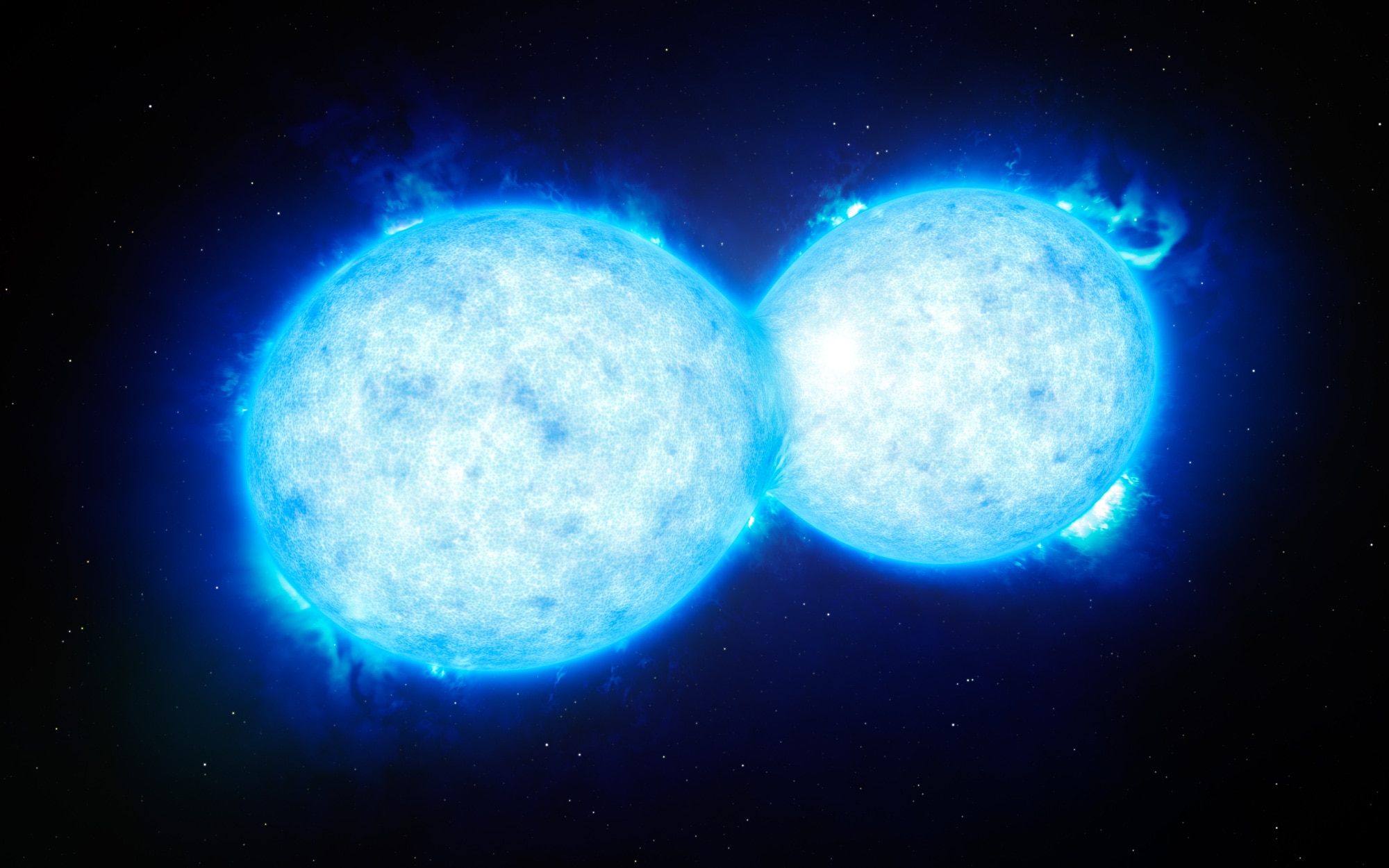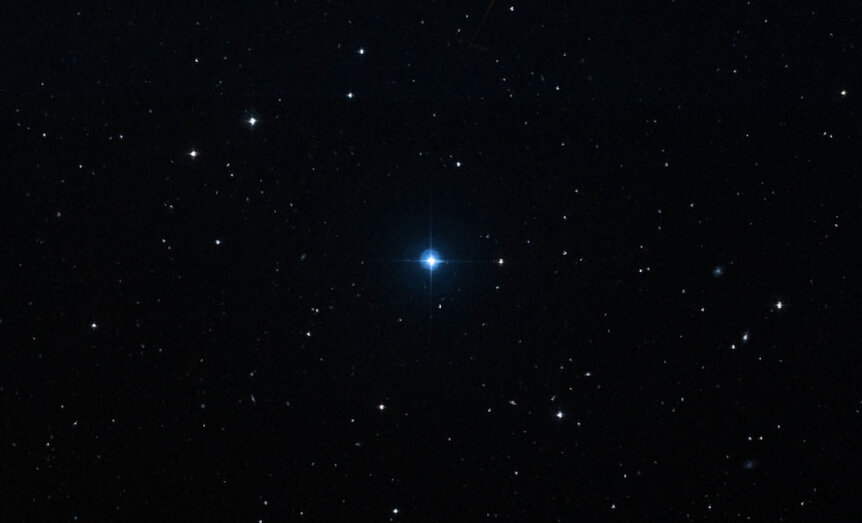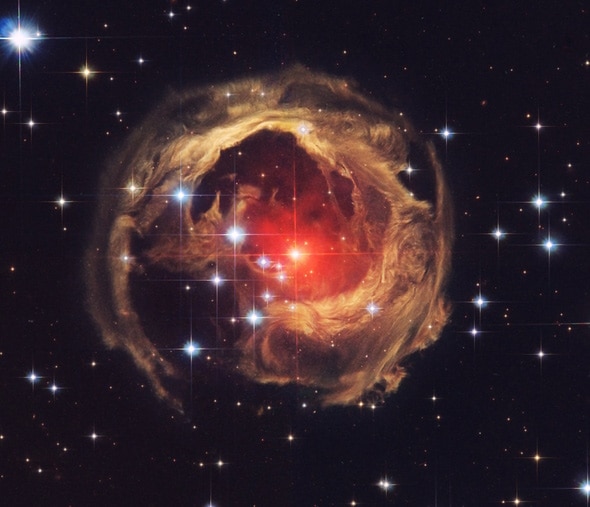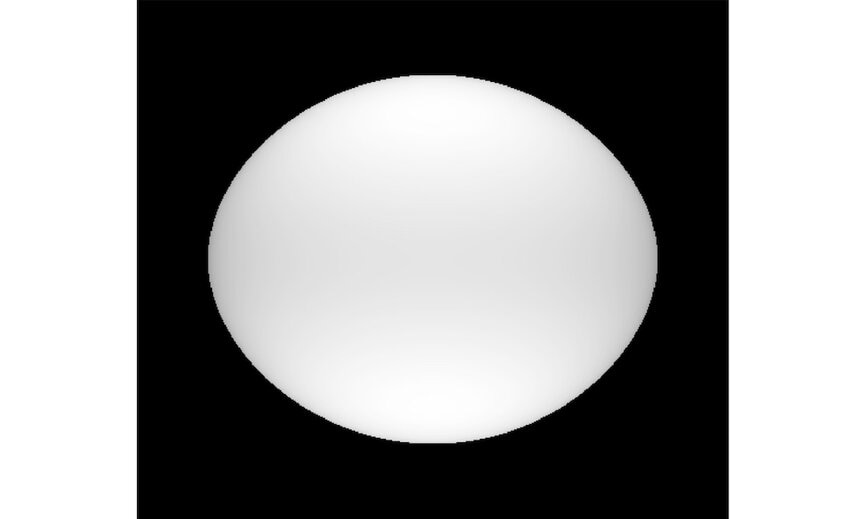Create a free profile to get unlimited access to exclusive videos, sweepstakes, and more!
Paradox! How did this 5-million-year-old star survive a 39-million-year journey?
Oddball star may be lying about its age.

Every now and again in astronomy you find an object that appears to be impossible. You can make, say, two very clear factual statements about it — call them A and B — but the two are mutually contradictory. If A is true, B cannot, and vice-versa.
Some people — the kind who make breathless YouTube videos with terrible lighting and use the word "sheeple" a lot — claim that all of science of wrong.
A scientist, though, looks at this and says, "Huh. One or both of my assumptions must be wrong."
So, let's talk about HD 93521. A team of astronomers studied it (link to paper) because it presents a problem.
It's what we call an O-type star, the most massive and luminous stellar classification. It's blasting out light at a rate 100,000 times the Sun's. If you had a pair of binoculars you could easily find it in the constellation of Leo Minor despite it being over 4,000 light years away.
We have excellent models of how stars behave based on their temperature, brightness, chemical composition, and more. Using these, the astronomers found that HD 93521 has a mass of about 17 Suns, making it a beast.
Based on this, we get Fact A: It has an age of about 5 million years, plus or minus a couple.
All fine and good. But. Our Milky Way galaxy is shaped overall like a flat disk a couple of thousand light years thick. To the best of our knowledge, stars form in that disk because that's where all the gas and dust is. Given its distance and location in the sky, it can be shown that HD93521 is located about 3,500 light years above that disk, well away from where all that star birth is.
Also, given its speed and direction, the amount of time it would've taken for it to get to its current position from the galactic disk can be found, which brings us to Fact B: Its time-of-flight, the length of its journey, is 39 ± 2 million years.
That, you may note, is much, much longer than 5 million years. If it's only 5 million years old, how could it get to where it is now in 39 million years?
Is all of science wrong? Or is one or both of these facts wrong?
And because I hate rhetorical questions, I'll go with the latter. It turns out HD 93521 is tricksy. It's lying about its age.
The basic contradiction comes from its age and how long it took to get where it is. The big clue about why is a bit of spin. Or a lot of spin.
HD 93521 is what we call a fast rotator; literally it spins very quickly. This can be determined by taking spectra of it, splitting its light up into individual colors. As it spins, the edge of the star headed toward us has its light blue-shifted, and the opposite edge rotating away from us has its light red-shifted. This broadens out its spectrum, smearing the features we normally see in it, and the faster the star spins the more they're broadened. Measuring this, HD 93521 is spinning at the fantastic rate of 435 kilometers per second at its equator.
That's staggering. Our Sun spins at 2 km/sec. Yes, two. This star is far larger, over 6 times the size of the Sun, and still spins more than 200 times faster! If it spun must faster the centrifugal force would literally tear the star apart. That's bizarre: Stars aren't born spinning that fast, so something must have spun it up.
Putting these facts together, here's what the astronomers think: HD 93521 didn't start out life as a star. It was two stars.
It may have been born in the galactic disk as a binary star, two stars orbiting each other. Both would've been massive, say 8 times the mass of the Sun. Something then ejected them at high speed from the galaxy. Perhaps they were born in a cluster of stars and encountered a single higher-mass star, which flung them away, or multiple encounters did the trick.
This could also perturb their orbit around each other enough that, over time, they got too close together and merged into a single star. We know this can happen: V838 Monocerotis is the most famous example, and others are known.
When two stars that orbit each other collide, the merger pumps a huge amount of angular momentum into the remaining object, similar to when an ice skater spin accelerates rapidly when they draw their arms in. The two stars may have spun rather slowly individually, but their orbital motion spun up the final post-merger star so much it almost flew itself apart — in fact it may have lost mass due to this when it happened, slowing its rotation as it did so until the force outward wasn't as strong as the force of gravity inward.
What's left is a seriously spinning star, so much so that it's significantly flattened. Models indicate it's as much as 20% wider through its equator than through its poles. If you were next to it it would look like a beach ball someone is sitting on.
And that resolves the apparent paradox. Stars with 8 times the Sun's mass live much longer than ones with 17, long enough to get where it is now. They may have been born 40 million years ago, say, and merged about 5 million years ago, explaining its apparent age.
I'll note that there is some uncertainty in the mass estimates, enough so that it could actually have 16 times the Sun's mass, not 17, including a bit of mass loss during the merger, so the idea still fits.
As it happens there are other solitary stars seen that have extremely rapid rotation, and they may be the product of mergers as well. This could explain some unusual structures around supernovae as well.
Paradoxes are fun to play with in science fiction, but when it comes to science fact you can pretty sure the Universe doesn't play that way. So when you see one, ask yourself: Does it make more sense that the Universe is wrong, or that you are?
Unless you're Dr. Beverly Crusher, bet on the Universe knowing what it's doing. You just need to understand the details better.





























